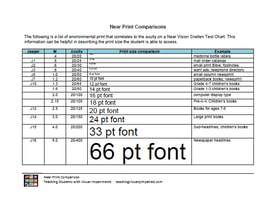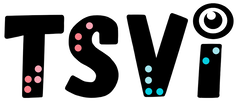- Home
-
Learn
- History of VI >
- Legislation & Laws >
- Vision Professionals >
-
VI Program Resources
>
- Program Printables
- Itinerant Teaching Tips
- Year at a Glance
- VI Program Handbook
- Caseload Analysis
- Organization & Time Management
- Professional Development
- Teacher Standards
- Professional Ethics
- Awards & Recognition
- APH Scholar Program
- Professional Organizations
- Certification Organizations
- Dealing with Challenges
- Professional Publications >
- Relatable Books for All Ages >
- Family Resources >
- Plan
- Basics
-
Teach
- Teaching Strategies >
-
Compensatory Skills Instruction
>
-
Social Skills
>
-
Self Determination
>
- Body Image & Acceptance
- Making Personal Goals
- My Vision Presentation
- My Self-Description
- Create a Personal Data Sheet
- Disclosure Decision
- Disability Statement
- Requesting Help
- Fighting Fears
- My Circle of Support
- Personal Responsibility
- Advocate for Safe Enviroments
- Having Picture Taken
- Coping with Change
- Aging Eyes
- Physical Characteristics
- Political Activism
- Laws Regarding Persons with Disabilities
-
Sensory Efficiency
>
-
Independent Living
>
- Orientation & Mobility Instruction >
- Recreation & Leisure >
-
Career & Vocation
>
-
Grow
- Complete Set Bonus >
-
Recorded Presentations
>
- Webinar: Tips for Being a "Physically Fit" TVI
- Webinar: The Art of Teaching the ECC
- Webinar: Virtual & F2F Strategies
- Webinar: Foundations of Teaching the ECC in the Age of Virtual Instruction
- Webinar: Itinerant Teaching Strategies
- Webinar: Using Themes to Teach the ECC
- Webinar: Conducting a FVLMA
- Webinar: Selecting the Right AT
- Webinar: Developing SMARTER Goals
- Webinar: Determining Service Intensity Using the VISSIT
- Webinar: Activities to Teach the ECC
- Webinar: Accessible Content for BLVI
- Webinar: Accommodations for VI
- Webinar: MIMO Strategies & Activities
- Webinar: SIDPID Strategies & Activities
- Webinar: Standard Course of Study Strategies & Activities
- Webinar: Job Tasks for Job, Career & Life
- Shop
- Jobs
Near Visual AcuitiesBy: Carmen Willings
teachingvisuallyimpaired.com As part of the Functional Vision Evaluation, it is necessary to assess the students near visual acuities. The technique used will vary depending on the students cognitive abilities. Near Visual AcuityAssess the student's near vision using a combination of informal and formal devices. Near acuity allows the student to perform visual tasks needed to succeed in academics such as reading, writing and fine motor activities. Take note of the students working distance. Include reading, sewing, stamp collecting, artwork, electronics or other preferred near vision hobbies. Observe the student reading not only typical school materials, both silently and aloud, but materials that vary in contrast and format.
A notebook can be assembled that includes samples of these items; in addition the evaluator can use a selection of age-appropriate books that include various typographic and picture formats. Observe the student's ability to read environmental print including: telephone books, maps, menus, price tags, clothing labels, comic books, medicine bottles, comic books, classified advertisements, game tickets, bus schedules, magazines, TV guide, catalogs, food labels, recipe, coupons, music and newspaper articles. Measure the student's reading speed under various conditions because many students with low vision use large or standard print for years without any comparison being made of their efficiency in various print styles. It is also important to observe the student after sustained silent reading. Some students can read efficiently for short periods, but their speed and efficiency decrease after five or ten minutes. Also observe the student performing math problems and reading diagrams, charts, maps and graphics. The student who fatigues easily when reading silently will need alternative approaches for longer tasks: audio taped materials, readers, and Braille in combination with print.
The formal assessment of near vision can be made using a standard near point card that includes a variety of sizes of print. This assessment is typically administered at 14 or 16 inches, and the teacher records the smallest line of print that can be read at that distance. When the student is unable to read a line of print, the evaluator can ask the student to move the card closer until the line becomes visible. Any changes in the administration of the test should be clearly indicated in the written report. Although the formal testing of near point visual acuity can provide information about the smallest-size letter a student can see, measured visual acuity should be considered in conjunction with informal methods, since eye charts consist of individual, separate letters that are easier to distinguish than are words or various print styles.
A variety of charts are available for pre-readers. I have used the LEA symbols, Sloan letter chart and Sloan number chart based on the students abilities. Not all students will be able to participate in this type of a formal assessment. I have included a page on print comparisons when assessing students who are pre-readers.
Depending on the results of the Near Visual Acuity, the following strategies, recommendations, and accommodations may be necessary to meet the students unique visual needs:

This Near Acuity Equivalent chart, available on the Printables page, can be used to help show a comparison between a student's near acuity, font size and print examples.
|
History of Visual Impairments
Professional Practice
Vision Professionals
Professionalism
Teacher Resources
Professional Publications
VI Book Resources
Family Resources
VI Referrals
Medical vision exams
visual diagnosis
fvlma
|
|
Teaching Students with Visual Impairments LLC
All Rights Reserved |
- Home
-
Learn
- History of VI >
- Legislation & Laws >
- Vision Professionals >
-
VI Program Resources
>
- Program Printables
- Itinerant Teaching Tips
- Year at a Glance
- VI Program Handbook
- Caseload Analysis
- Organization & Time Management
- Professional Development
- Teacher Standards
- Professional Ethics
- Awards & Recognition
- APH Scholar Program
- Professional Organizations
- Certification Organizations
- Dealing with Challenges
- Professional Publications >
- Relatable Books for All Ages >
- Family Resources >
- Plan
- Basics
-
Teach
- Teaching Strategies >
-
Compensatory Skills Instruction
>
-
Social Skills
>
-
Self Determination
>
- Body Image & Acceptance
- Making Personal Goals
- My Vision Presentation
- My Self-Description
- Create a Personal Data Sheet
- Disclosure Decision
- Disability Statement
- Requesting Help
- Fighting Fears
- My Circle of Support
- Personal Responsibility
- Advocate for Safe Enviroments
- Having Picture Taken
- Coping with Change
- Aging Eyes
- Physical Characteristics
- Political Activism
- Laws Regarding Persons with Disabilities
-
Sensory Efficiency
>
-
Independent Living
>
- Orientation & Mobility Instruction >
- Recreation & Leisure >
-
Career & Vocation
>
-
Grow
- Complete Set Bonus >
-
Recorded Presentations
>
- Webinar: Tips for Being a "Physically Fit" TVI
- Webinar: The Art of Teaching the ECC
- Webinar: Virtual & F2F Strategies
- Webinar: Foundations of Teaching the ECC in the Age of Virtual Instruction
- Webinar: Itinerant Teaching Strategies
- Webinar: Using Themes to Teach the ECC
- Webinar: Conducting a FVLMA
- Webinar: Selecting the Right AT
- Webinar: Developing SMARTER Goals
- Webinar: Determining Service Intensity Using the VISSIT
- Webinar: Activities to Teach the ECC
- Webinar: Accessible Content for BLVI
- Webinar: Accommodations for VI
- Webinar: MIMO Strategies & Activities
- Webinar: SIDPID Strategies & Activities
- Webinar: Standard Course of Study Strategies & Activities
- Webinar: Job Tasks for Job, Career & Life
- Shop
- Jobs

